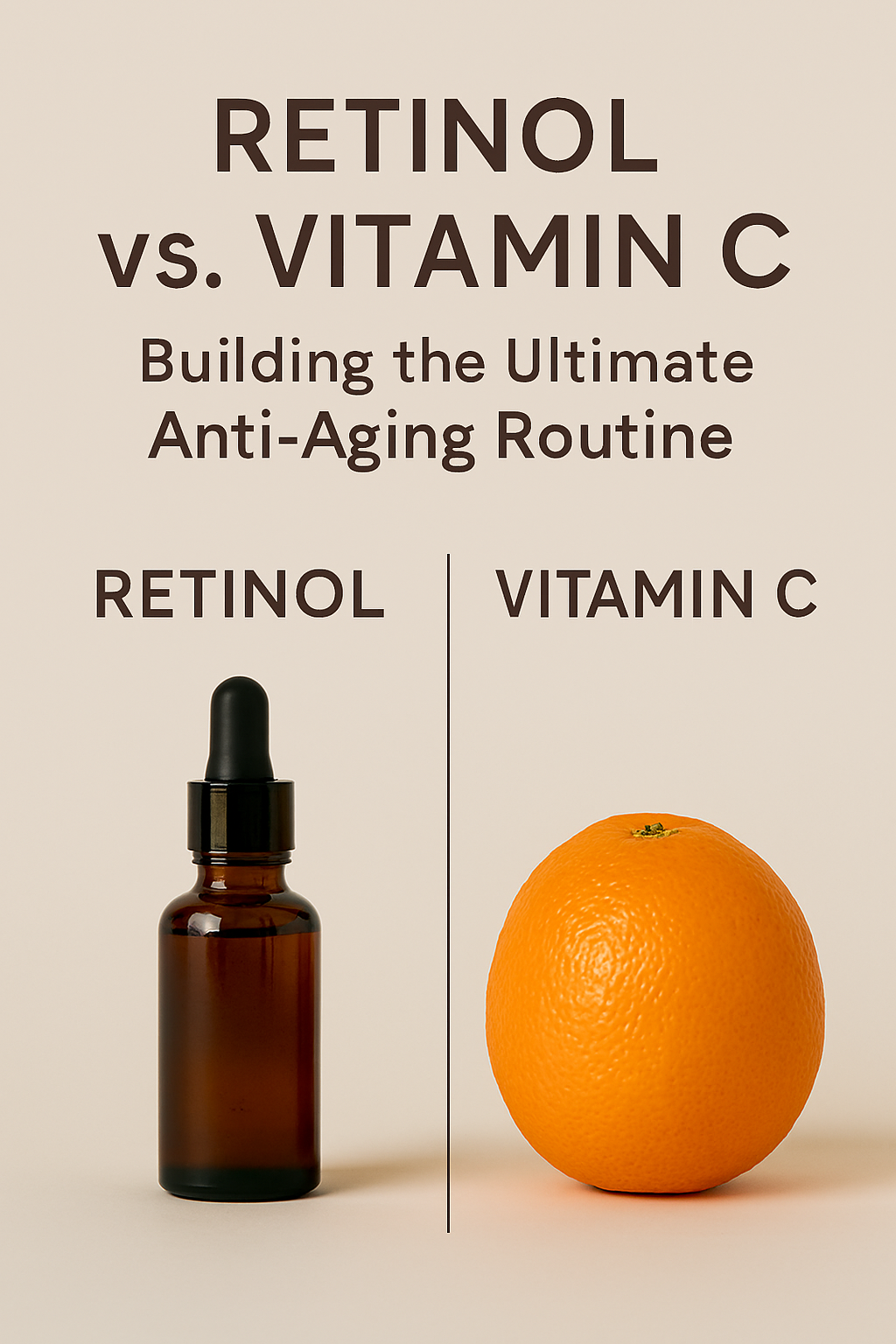Creating a skincare regimen that truly delivers on its anti-aging promises starts with choosing powerhouse ingredients—and few rival retinol and vitamin C. In this deep dive, we’ll unpack how each works, compare their unique benefits and drawbacks, reveal whether you can use them together, and map out a step-by-step routine that harnesses both for radiant, youthful skin.
Understanding the Anti-Aging Heavyweights
What Is Retinol?
Retinol is a derivative of vitamin A celebrated for its ability to accelerate skin cell turnover, boost collagen synthesis, and visibly soften fine lines and wrinkles. When applied topically, it converts into retinoic acid—the molecule that triggers these cellular changes—without the high irritation risk of prescription-strength formulas.
What Is Vitamin C?
Vitamin C (ascorbic acid) is a potent antioxidant that neutralizes free radicals from UV exposure and pollution. It not only shields collagen from oxidative damage but also inhibits melanin production, leading to a brighter, more even complexion over time.
Key Benefits at a Glance
| Benefit | Retinol | Vitamin C |
|---|---|---|
| Collagen Boost | Stimulates collagen production for firmer skin | Essential cofactor in collagen synthesis |
| Wrinkle Reduction | Speeds up cell turnover to smooth fine lines | Protects existing collagen from free-radical damage |
| Brightening & Tone | Fades acne scars and promotes uniform texture | Inhibits melanin, reducing dark spots and dullness |
| Antioxidant Protection | Offers moderate antioxidant defense | Provides powerful daily defense against environmental stressors |
| Acne & Pore Clarity | Unclogs pores and reduces oil production | Limited direct effect on acne, but reduces post-inflammatory hyperpigmentation |
Table sourced and adapted from Clearskin Regime.
Side Effects and Skin Considerations
- Retinol can trigger dryness, redness, and flaking—especially at the start. Introducing it gradually (twice a week, then every other night) helps build tolerance.
- Vitamin C formulations may sting slightly on sensitive skin or oxidize quickly if not packaged in air-tight, dark containers. Starting with a lower concentration (10–15%) minimizes irritation while still delivering antioxidant benefits.
Synergy: Using Retinol and Vitamin C Together
Contrary to old myths, pairing retinol and vitamin C amplifies anti-aging results. Studies show their combined use boosts overall collagen production and enhances skin firmness better than either alone. To maximize synergy without irritation:
- Separate by Time of Day
- Morning: Vitamin C
- Night: Retinol
- Alternate Layering with a Buffer
If you prefer to layer on the same application, apply vitamin C first, wait 15–20 minutes, then follow with retinol. A gentle moisturizer between layers can further cushion the skin.
Crafting Your Ultimate Anti-Aging Routine
Morning Ritual
- Cleanser: Use a gentle, pH-balanced formula.
- Vitamin C Serum: Pat 2–3 drops across face and neck.
- Moisturizer: Seal in hydration.
- Sunscreen: Broad-spectrum SPF 30+ is non-negotiable to protect both collagen and actives.
Evening Ritual
- Cleanser: Remove makeup and SPF.
- Retinol Treatment: Start with a pea-sized amount twice weekly, building to nightly.
- Moisturizer: Follow with a nourishing, barrier-supporting cream.
Pro Tips for Maximum Results
- Always perform a patch test before introducing potent actives.
- Store vitamin C serums away from light and heat to prevent oxidation.
- If irritation occurs, reduce frequency or switch to a lower concentration of retinol.
- Listen to your skin’s needs—thicker creams or hydrating masks can counteract dryness.
Conclusion
By understanding the distinct roles of retinol and vitamin C—and learning how to combine them thoughtfully—you can construct an anti-aging routine that tackles wrinkles, loss of firmness, uneven tone, and environmental damage in one comprehensive plan. Embrace their synergy, stay consistent, and watch your skin transform into its brightest, most youthful version yet.
